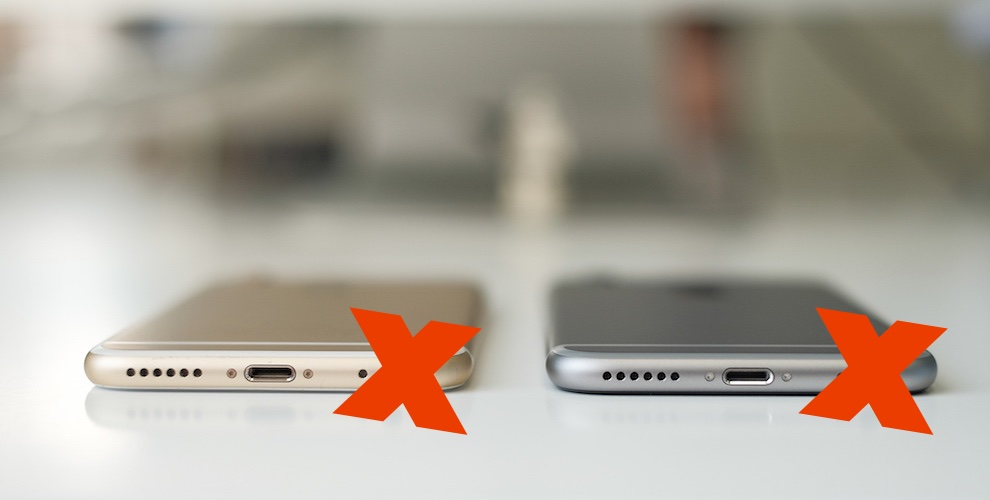
Much of the news coverage leading up to today’s Apple event has been centered on the company’s decision to eliminate the headphone jack in the latest iteration of the iPhone. There’s been debate, there’s been outrage, and there’ve been plenty of stories advising users on the best Lightning or Bluetooth headphones to buy, or how to make your current headphones work with an adapter.
Bye bye headphone jack. Hello dongle. Why? "Courage," says Schiller. #AppleEvent pic.twitter.com/wfqB5RGzVV
— Geoffrey A. Fowler (@geoffreyfowler) September 7, 2016
For journalists, however, the iPhone has for years been a full-fledged reporting device — a voice recorder, camera, video camera, and publishing platform, all in one — and the elimination of the headphone jack might force some of them to buy new equipment or change the tools they use. Most external microphones or convertors that allow microphones to work with the iPhone connect through the headphone jack, and the shutter on many selfie sticks is also controlled through via the headphone jack.
“I’m not panicking,” said Neal Augenstein, a reporter with WTOP in Washington, D.C. when we spoke this morning before the Apple event. Augenstein has exclusively used his iPhone to report from the field since 2010.
“You’ll remember that Apple changed from the original charging port to the Lightning port and we all lived. In some cases, it will mean that people will have to buy new equipment, but I’m sure that Apple will be including or offering for sale a convertor which will convert whatever went into the eighth-inch jack into the Lightning jack.” (Indeed, Apple said it would be including one with each iPhone.)
If journalists don’t want to bother with using an adapter to make their old equipment work with the Lightning port, there are already a number devices that allow users to connect a microphone to their iPhone with a Lightning cable, Augenstein said. Without a headphone jack, however, reporters may not be able to monitor their audio as they’re recording. Still, he said most listeners won’t notice a difference between audio recorded with a microphone connected via the analog headphone jack or the Lightning port.
“The sound quality bringing a microphone into the headphone jack versus the digital lightning jack is not a difference that I can hear with my basic ear,” he said.
Perhaps more importantly, however, recording with a microphone connected through the Lightning port means reporters may have trouble recording and charging their phones simultaneously — something that could be a challenge for, say, covering evening meetings or other events. (“Strategic charging remains the biggest challenge for a reporter using the iPhone in the field,” Augenstein said.)
In a post last year, Martin Skaheshaft, a journalism lecturer based in the U.K., reviewed the iRig Pro, a popular Lightning-connected microphone connector. “Sound quality is excellent with a good microphone,” Shakeshaft wrote, but he noted that the Lightning connector is costly and physically bigger than an analog convertor that works with the headphone jack.
On Twitter, some journalists cautioned against buying new equipment or lamented that they’ll no longer be able to just plug their microphone into the headphone port:
#mojo About to buy a mic or rig? May want to think again: iPhone 7 Leak 'Confirms' Apple to Eliminate Headphone Jack https://t.co/bSHdiqCcFh
— Peter Stewart (@TweeterStewart) April 30, 2016
If next iPhone doesn't have 3.5mm headphone port, @rodemics will have to come up with something for their VideoMic Me. #mojo
— Raya Fahreza (@rayafahreza) August 1, 2016
@rayafahreza @rodemics Rode has a i-XLR with lighting cable. I'm sure an adapter will be work or even better a lighting version. All digital
— Erik Naso (@ErikNaso) August 1, 2016
@ErikNaso @rodemics yes those will work, but it won't be as nifty as simply plugging in the mic.
— Raya Fahreza (@rayafahreza) August 1, 2016
It’s safe to say though that most reporters won’t have to change their news gathering practices. If you look at any photo of reporters interviewing a source or working at a press conference you’ll notice that journalists primarily use the built-in microphones on their iPhones to record, and generally the quality of the the iPhone microphone is good enough for journalistic purposes — in particular if you’re not planning on publishing the audio to readers.
“My estimate has been that it’s 92 percent as good speaking into the built-in microphone of the iPhone…as if I were using a digital recorder with a standard $150 handheld broadcast mic.”